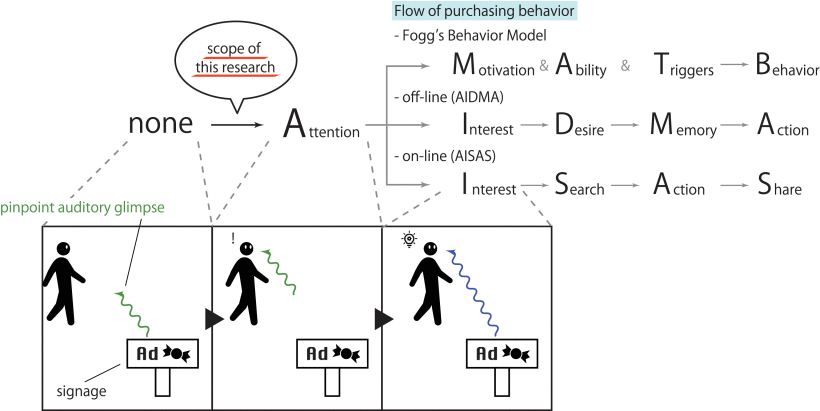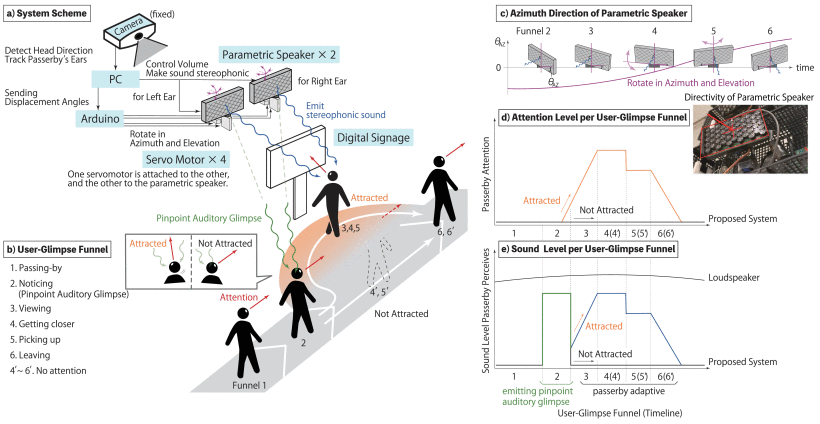・We proposed the use of a pinpoint auditory glimpse as a sound-based solution to address display blindness.
・Through acoustic measurements and participant experiments conducted in a pseudo-store, it was found that (1) the use of a pinpoint auditory glimpse can effectively trigger passersby to pay attention to signage and (2) the pinpoint auditory glimpse does not negatively impact purchasing behavior, despite emitting sound.
・These results demonstrate the potential of the pinpoint auditory glimpse as a novel, sound-based method for solving display blindness, and highlight the potential for it to lead to changes in advertising display business models and increased flexibility in sound design in public spaces.
Abstract
This study proposes a system called “pinpoint auditory glimpse,” which uses sound to notify passersby of the presence of signage. The system presents pinpoint sounds to a passerby walking near the signage as a kind of “pump-priming,” as shown in the Figure 1. In other words, there is no sound until a passerby approaches the signage, but the sound is initiated the moment they approach the signage, with the intention of making them aware of the presence of signage. Additionally, the pinpoint auditory glimpse is designed to be presented only for a short period of time to prevent noise pollution. A parametric speaker, a device that obtains narrowly directional audible sound, is used as a sound emitter.
Our findings indicate that a pinpoint auditory glimpse can effectively draw people’s attention to signage, and that once a person responds to the sound, they are more likely to continue paying attention to the signage. Additionally, our results suggest that the presence of a pinpoint auditory glimpse does not negatively impact participants’ purchasing behavior. Furthermore, this system offers benefits not only for advertisers, but also for the general public by reducing the overall sound level and minimizing any potential harm to passersby.
Benefit
A sound-based solution to address display blindness, which does not create noise in the surrounding area.
Market Application
These findings can be used to develop guidelines and systems for landscape maintenance, human flow control, and crisis avoidance.
Publications
https://ieeexplore.ieee.org/document/10109739


